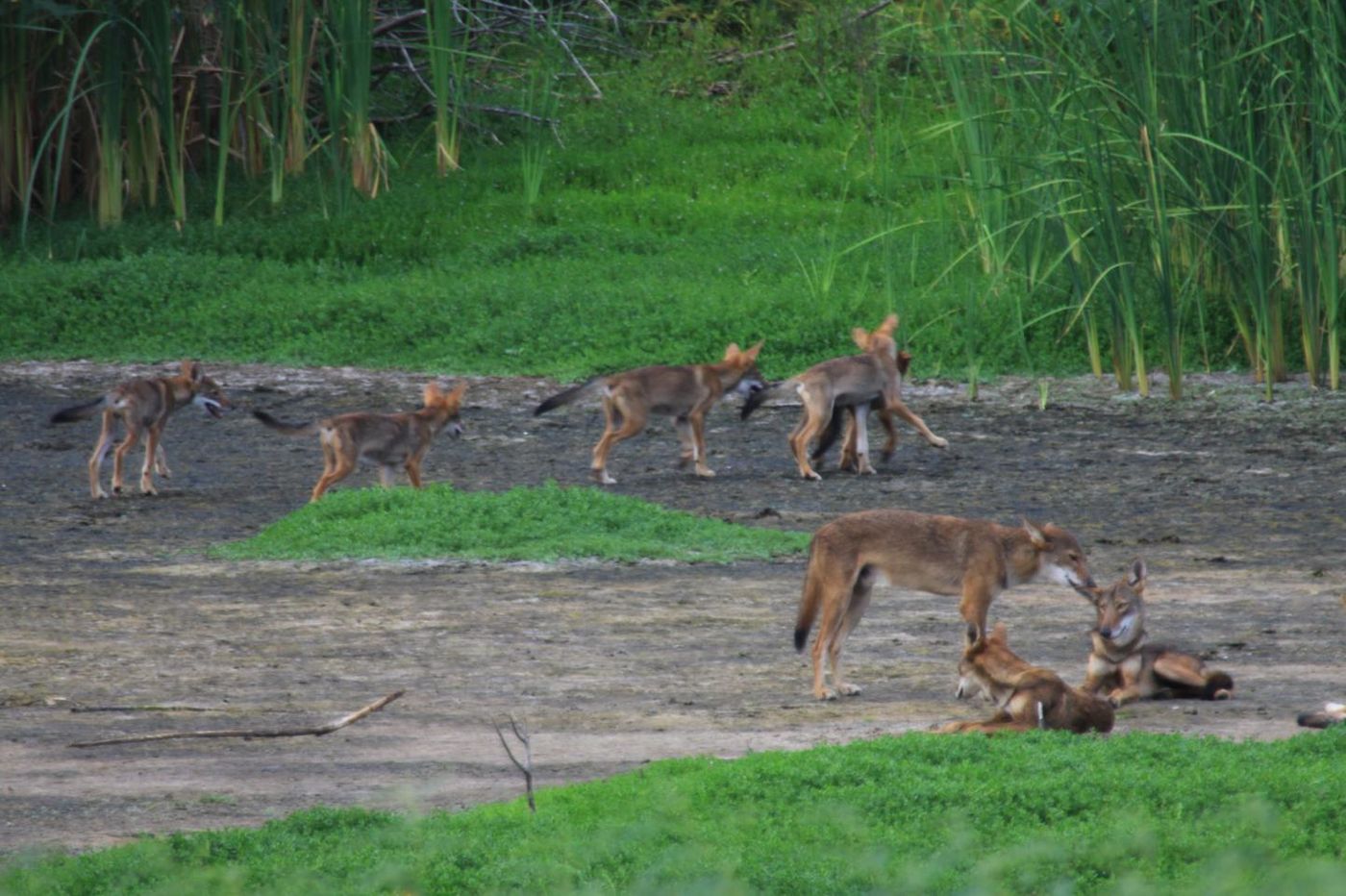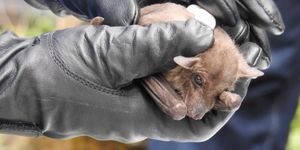Red Wolf DNA Discovered in Unusual Canines
Red wolves (Canis rufus) were thought to be extinct in the wild and were listed as such in 1980. However, a team of researchers has now discovered red wolf DNA in canines living on Galveston Island, Texas. It had been assumed that the only red wolves still around were some that had been reintroduced to North Carolina. The findings have been reported in a special issue of the journal Genes called Conservation Genetics and Genomics.
"This is a remarkable finding, as red wolves were declared extinct in this region over 35 years ago and remain critically endangered," said graduate student Elizabeth Heppenheimer, who works in the lab of Bridgett vonHoldt, an assistant professor of ecology and evolutionary biology at Princeton. "While there have been reports of red wolves along the Gulf Coast, conventional science dismissed them as misidentified coyotes. Now, we have shown that at least one example of a 'red wolf sighting' has some validity to it, as these Galveston Island animals definitely carry genes that are present in the captive red wolf population yet absent from coyotes and gray wolf populations."
Red wolves are bigger than coyotes but smaller than gray wolves. They once called the southeastern United States home but faced extinction by 1970. In an effort to save them, the only ones left were trapped and used for captive breeding. Inbreeding with coyotes had already started, however, and only seventeen percent of the captives were 100 percent wolf. Fourteen of that group reproduced successfully, and the resulting population was released in North Carolina in 1990.
The success of that program led to others, and restoration efforts began for gray wolves in Yellowstone National Park and Mexican wolves in the southwest, among others. Unfortunately, the red wolves now number fewer than 40, and they are once again facing extinction in the wild.
Wildlife biologist Ron Wooten had been studying canines on Galveston Island and contacted the vonHoldt lab. He wanted them to test samples from two animals that were killed on the road.
"I regularly receive this kind of inquiry, but something about Wooten's email stood out," said vonHoldt. "His enthusiasm and dedication struck me, along with some very intriguing photographs of the canines. They looked particularly interesting, and I felt it was worth a second look."
"Somewhere along the way, the second sample had gotten lost, and he ended up sending us the dirty scalpel he had used to take the sample," said Heppenheimer. "We have a huge inventory of coyote and wolf samples in the lab, and it's quite rare that I would remember any one sample arriving, but no one had ever sent us a scalpel before, so it was a pretty memorable experience trying to extract this DNA."
After processing the samples, they compared it to known species of wolves and coyotes. The team found that the Galveston Island canines had more in common genetically with captive red wolves than southeastern coyotes.
"I think we were all genuinely surprised that there was any indication of red wolf genes in either of these samples," said Heppenheimer. "We get odd samples shipped to us fairly regularly, and most of the time they turn out to be coyotes. ... Initially, I was extremely skeptical that the analysis would turn up anything interesting, which in the end turned out to be very humbling. I think of myself as an expert on these animals, but in reality most of the time I'm just looking at my computer. It's the people on the ground, who watch these animals regularly, who have made the major discovery."
The Galveston Island animals not only shared genes with red wolves. They also had a unique genetic variation that’s not seen in any of North America’s known canines.
"This variation may represent the red wolf derived genes that were lost as a result of captive breeding," said Heppenheimer. "It's incredibly rare to rediscover animals in a region where they were thought to be extinct, and it's even more exciting to show that a piece of an endangered genome has been preserved in the wild."
The evolutionary origins of wolves are discussed in the video from AAAS.
The interbreeding between coyotes and red wolves has confounded their designations as species. Bacteria, for example, reproduce asexually, however, so other definitions of species are recognized. ”Coyotes and wolves are considered distinct species based on the 'ecological species' concept, which recognizes wildlife as different species if they use different resources within their environments," explained Heppenheimer.
The animals do prefer breeding with other members of their species; ecological pressures force them together. That interbreeding has also created an unusual animal, Heppenheimer acknowledged. "It's hard to put my finger on exactly what about these animals made them look ambiguous, since we didn't take any quantitative measurements, but the snout shape and the overall size of the animals just didn't look quite right for them to be pure coyote," Heppenheimer said.
"This is a remarkable finding and encourages us to possibly redefine what is considered the canonical coyote," said vonHoldt. "It may not actually exist in the American southeast. Coyote populations may more likely represent a mosaic collection of individuals with diverse histories, with some possibly carrying the remnants of an extinct species. We hope that these findings resonate with policymakers and managers, and influence how we think about endangered genetics."
Sources: AAAS/Eurekalert! Via Princeton University, Genes









